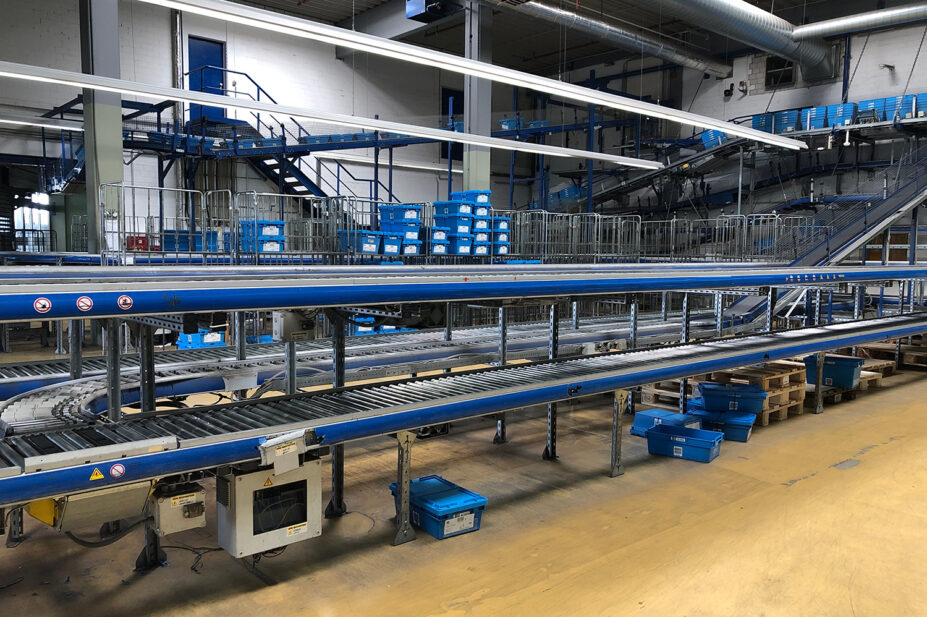
Shutterstock.com
Following three years of discussion and postponements, changes to hub-and-spoke dispensing regulations came into effect on 1 October 2025.
Under the changes, pharmacies from different legal entities can operate as ‘hub’ and ‘spoke’ pharmacies. Previously, only pharmacies from the same legal entity could do this.
Between March and June 2022, the Department of Health and Social Care (DHSC) consulted on hub-and-spoke dispensing, proposing two models that it said had the potential to benefit smaller pharmacies in terms of time and cost savings.
Under Model 1 — which has been adopted — a patient presents their prescription to a spoke pharmacy, which sends this to a hub pharmacy to assemble. The hub pharmacy then sends this back to the spoke, which then supplies the medication to the patient.
Under Model 2, the same pathway to the hub pharmacy would occur, but the hub pharmacy would then send the medication to the patient directly, rather than back to the spoke pharmacy. The government did not take this model forward, citing safety concerns and the risk of undermining patients’ relationships with their pharmacist.
However, in a parliamentary debate held in June 2025, pharmacy minister Stephen Kinnock said the government was still “open to looking at Model 2”, after it reviews the success of Model 1’s implementation.
In an impact assessment published alongside the consultation document, the government said that 38% of pharmacies would benefit from the new legislation and that 12% of these potential beneficiaries would adopt hub-and-spoke dispensing within the next five years, while a further 20% would adopt it over the next ten years.
But will pharmacies on the ground adopt the system, and how many will benefit?
Cost savings
The impact assessment estimates there would be “a 40% time-saving reduction on a cost of £1.20 to dispense a prescription item in a spoke pharmacy”.
It also estimated that there would be a 40p per item cost of hub dispensing — a net saving of 8p per item in operating costs — and that the average set-up cost for spoke pharmacies would be £4,000.
HubRx, an existing hub service provider, states on its website that it can save pharmacies 15 hours per day, resulting in a £109,000 annual profit for a pharmacy dispensing 8,000 items per month, if HubRx was used for 60% of its dispensing.
It will skew the market in the direction of larger players, as smaller players don’t really have access to the capacities required to set this up meaningfully
Leyla Hannbeck, chief executive of the Independent Pharmacies Association
However, Leyla Hannbeck, chief executive of the Independent Pharmacies Association, described these savings as “not realistic” and “too optimistic”.
“We have got members who have been pioneers in this area of hub-and-spoke [dispensing] and they have stated that the savings don’t really feed through in the way that they’re presented,” she says.
“We believe that it will skew the market in the direction of larger players, as smaller players don’t really have access to the capacities required to set this up meaningfully.”
Hannbeck adds that this means smaller, independent pharmacies are “the ones that are least likely to benefit”.
Malcolm Harrison, chief executive of the Company Chemists’ Association (CCA), is also doubtful that the model will benefit hub pharmacies, saying that members have reported that it “tends to shift costs from spoke pharmacies to the hub”.
“Our members report that the upfront capital required to establish a large-scale assembly facility is substantial, and the ongoing costs of maintaining complex machinery and IT systems are equally significant.
“Given the high costs of setup, a return on investment could take many years, and so rapid widespread adoption of hub-and-spoke arrangements seem unlikely given the financial health of the sector.
“The setup costs may also make it difficult for new facilities to be developed, or for pharmacies to outsource assembly services to third parties.”
Non-monetary benefits
In its impact assessment, the government tied cost savings for pharmacies operating the hub-and-spoke model to savings in dispensing time.
It also said there was the potential for reduced rates of dispensing errors and the associated patient harm and time spent resolving errors; increased clinical service provision — which speaks to the NHS ten-year plan — and a calmer working environment at the spoke pharmacy.
Mike Hewitson, superintendent pharmacist and managing director of Beaminster Pharmacy in Dorset, has adopted the new model at his spoke pharmacy, using the HubRx service, and says these benefits are already being realised.
He explains that temporary and permanent pharmacy closures in his area have meant his pharmacy team has been pushed to its limits.
“We’ve been absolutely overwhelmed with stuff for as long as I can remember now, it’s just been standstill, and that’s putting a huge strain on my team, so when the hub eventually got switched on … that’s been the real light at the end of the tunnel for us in terms of being able to cope with things.
“I can whip through stuff that would have taken me three, four hours to check and get out to patients, and now it takes me minutes.”
As a result, Hewitson adds that his team is looking at how it can boost its other services to take advantage of their new capacity.
In lots of pharmacies, tomorrow’s not really been the concern as they’re so focused on today
Mike Hewitson, superintendent pharmacist and managing director of Beaminster Pharmacy in Dorset
“We can focus on thinking about what the future holds. I know that sounds really ‘wishy washy’, but in lots of pharmacies, tomorrow’s not really been the concern as they’re so focused on today. But they forget that we’ve got to lift our heads up and think about where we go next and what we want to be doing.”
He acknowledges that things are only going to get busier — and more costly — for pharmacies and says that using a hub can help this.
“The national living wage will probably go up again in the Budget, which is going to put even more pressure on people using entirely manual processes, but the hub itself isn’t going to be subject to the national income wage increase this time.
“We’re currently at something like 1.1 billion items [dispensed] a year. By 2030, we’ll be at something like 1.3 billion items. We could easily see 2,000 less pharmacies in that time, which will mean that every pharmacy is going to have to deal with a 30–50% increase in its workload.
“With the hub, we know that we can cope with that because we aren’t having to put more bodies into a building. We aren’t having to think about what those staff costs look like. My dispensing costs are knowable and modellable … and we can begin to think about where we go next, which is the exciting bit for me, transforming us away from a dispensing-led model to something different.
“We’re focusing on clinical services and providing independent prescribing, so using my IP qualification to best affect the patients means we can really engage with that next wave of pharmacy services.”
Providing hub services
Mark Pedder, commercial director of HubRx, says the response from independent pharmacies to its services has been “incredibly positive”.
“We went live with our first raft of pharmacies on 29 October [2025] — the first day the legislation change allowed — and the months ahead are very busy for the onboarding team as more pharmacies join the service.
“The feedback we’ve had from our early adopter pharmacy customers is that it’s so simple and effective. Just a couple of clicks within their PMR [patient medication record] system and they receive packed patient bags in totes the next day.”
Pedder acknowledges that pharmacies may be cautious to trust a partner with their core dispensing but says the company’s experience over the past few weeks “has only further highlighted just how transformational access to this type of service can be for independents”.
HubRx has its own chain of 31 pharmacies, Pharmacy+Health, across Yorkshire.
Pedder says that, across the pharmacies, “we’ve been able to increase our capacity significantly, with an average-sized branch being able to unlock up to 90 hours per week, providing an opportunity for owners to keep a closer eye on staff costs, refocus how teams work and upskill them to deliver more profitable and rewarding clinical services”.
“We’ve proved that we can hugely reduce stock holding — not just releasing the money tied up in prescription items when they start using the HubRx service — but in the weeks before as they prepare to go live.
“As community pharmacy is increasingly called up by the government, the NHS and indeed patients to provide more clinical services, automating more of prescription delivery is essential.”
Barriers to hub and spoke
The main issue, as ever, for pharmacies to adopt the hub-and-spoke model, is money, as Gareth Jones, director of corporate affairs at the National Pharmacy Association, highlights.
“Some independent pharmacies, but by no means all, will find hub and spoke to be a useful mechanism for releasing time for patient care. However, this is certainly no silver bullet as far as pharmacy finances are concerned,” he says.
“The medium to long-term business case only stacks up for local pharmacies if there is an ongoing pipeline of NHS investment in clinical services, to make productive use of the pharmacist time released.”
Dispensing, which currently accounts for around 80% of workload, has become a loss-leading service for many pharmacies
Malcolm Harrison, chief executive of the Company Chemists’ Association
Harrison also points out the need for funding. “There remains a considerable gap between the cost of providing NHS pharmaceutical care and the level of funding available to community pharmacies.
“Dispensing, which currently accounts for around 80% of workload, has become a loss-leading service for many pharmacies. Considering this, it is doubtful whether many will adopt hub-and-spoke arrangements unless there is a clear benefit to be made from utilising the freed-up capacity.”
He says that to make hub-and-spoke arrangements viable, “two key changes are needed”: dispensing must be remunerated appropriately, and new clinical services must be commissioned — with additional funding — for spoke pharmacies.
Hannbeck agrees, saying that the model only makes business sense for larger operators: “What we know from our members is that the vast majority won’t be using a hub.”
She also highlights other concerns. “If something happens to the hub, what happens if a patient doesn’t get their medicines on time? What happens with that reputational element for the pharmacy who goes through a hub?”
Hewitson says he’s been able to adopt the new model “without a bump in the road”, but points out that he had to change his patient medication record (PMR) system to ensure his pharmacy could use HubRx.
“So that’s not going to be for everyone, but I’m confident that most PMR systems will have compatibility in the future.”
In these early days, it is hard to tell what the new hub-and-spoke model will do for pharmacies; it seems there is the potential for it to improve the day job, but that without funding this cannot be realised.
Jones speaks to this: “We’ll keep an eye out for unintended consequences, because this is a substantial change in pharmacy practice that needs to operate safely and efficiently for patients and on a level playing field for contractors.”


